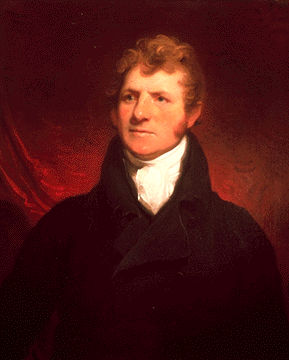Article
Sir William Johnson
Sir William Johnson, merchant, fur trader, colonial official (born ca. 1715 in Smithtown, County Meath, Ireland; died 11 July 1774 in Johnson Hall, near Johnstown, NY).

Enter your search term
Signing up enhances your TCE experience with the ability to save items to your personal reading list, and access the interactive map.
Create AccountArticle
Sir William Johnson, merchant, fur trader, colonial official (born ca. 1715 in Smithtown, County Meath, Ireland; died 11 July 1774 in Johnson Hall, near Johnstown, NY).
"https://d2ttikhf7xbzbs.cloudfront.net/media/media/813dff7d-8227-4201-9405-43db3b3e98c0.jpg" // resources/views/front/categories/view.blade.phphttps://d2ttikhf7xbzbs.cloudfront.net/media/media/813dff7d-8227-4201-9405-43db3b3e98c0.jpg

Article
Thomas Frobisher, fur trader (b at Halifax (?), Yorkshire, Eng 1744; d at Montréal 12 Sept 1788).
"https://d2ttikhf7xbzbs.cloudfront.net/Fort_de_ile_a_la_Crosse_en_1820.jpg" // resources/views/front/categories/view.blade.phphttps://d2ttikhf7xbzbs.cloudfront.net/Fort_de_ile_a_la_Crosse_en_1820.jpg

Article
Voyageurs were independent contractors, workers or minor partners in companies involved in the fur trade. They were licensed to transport goods to trading posts and were usually forbidden to do any trading of their own. The fur trade changed over the years, as did the groups of men working in it. In the 17th century, voyageurs were often coureurs des bois — unlicensed traders responsible for delivering trade goods from suppliers to Indigenous peoples. The implementation of the trading licence system in 1681 set voyageurs apart from coureurs des bois, who were then considered outlaws of sorts. Today, the word voyageur, like the term coureur des bois, evokes the romantic image of men canoeing across the continent in search of furs. Their life was full of perilous adventure, gruelling work and cheerful camaraderie.
"https://d2ttikhf7xbzbs.cloudfront.net/media/media/50d0c290-345d-4655-b501-3cfa471dfdb7.jpg" // resources/views/front/categories/view.blade.phphttps://d2ttikhf7xbzbs.cloudfront.net/media/media/50d0c290-345d-4655-b501-3cfa471dfdb7.jpg

Article
During the War of 1812 he commanded a company of voyageurs, assisting General BROCK at the capture of Detroit. As leader of the NWC, he presided over a period of intense competition with the Hudson's Bay Co that ended when the companies united in 1821.
"https://d2ttikhf7xbzbs.cloudfront.net/media/media/c979e2b2-567d-4bcf-a27b-273edd7519fd.jpg" // resources/views/front/categories/view.blade.phphttps://d2ttikhf7xbzbs.cloudfront.net/media/media/c979e2b2-567d-4bcf-a27b-273edd7519fd.jpg

Article
William McIntosh, fur trader (b at Grand Rapids, US 1784; d 16 Feb 1842). By 1816 a wintering partner in the North West Company, he had previously been positioned at Lesser Slave Lake (1803) in the Peace River country (1805) and at Fort Vermilion (1815).
"https://development.thecanadianencyclopedia.ca/images/tce_placeholder.jpg?v=e9dca980c9bdb3aa11e832e7ea94f5d9" // resources/views/front/categories/view.blade.phphttps://development.thecanadianencyclopedia.ca/images/tce_placeholder.jpg?v=e9dca980c9bdb3aa11e832e7ea94f5d9

Article
A wintering partner (also "winterer") was an inland trader and shareholder, most notably in the North West Company. The wintering partner system evolved in New France, where fur merchants divided their profits with associates conducting the trade.
"https://development.thecanadianencyclopedia.ca/images/tce_placeholder.jpg?v=e9dca980c9bdb3aa11e832e7ea94f5d9" // resources/views/front/categories/view.blade.phphttps://development.thecanadianencyclopedia.ca/images/tce_placeholder.jpg?v=e9dca980c9bdb3aa11e832e7ea94f5d9

Article
An Algonquin man declared to Jesuit missionary Paul Le Jeune in 1639: “To live among us without a wife is to live without help, without home and to be always wandering.” While the importance of having a home and wife may have been lost on the itinerant and celibate Jesuit priest, for many First Nations this quote evokes the social, economic and political advantages of marriages, especially in the context of the fur trade. Indigenous women’s labour produced and mended clothing, preserved meats, harvested maple sugar and root vegetables like turnips, trapped small game, netted fish and cultivated wild rice — all crucial survival and subsistence activities in the boreal forests, prairie parklands and northern plains of fur trade society. Through intraclan marriages (see Clan), First Nations women forged extended kin lineages, established social obligations and reciprocal ties, and negotiated for the access and use of common resources across a vast and interconnected Indigenous world. Marriages between different Indigenous villages, clans and nations shaped regional politics, fostered lateral marital alliances and created a geographically diverse and widespread kinship network throughout the Great Lakes- St. Lawrence River Basin, the Hudson Bay watershed, and the Pacific Slope (see Pacific Ocean and Canada.)
"https://d2ttikhf7xbzbs.cloudfront.net/WomenFurTrade/TrappersWifeCropped.jpg" // resources/views/front/categories/view.blade.phphttps://d2ttikhf7xbzbs.cloudfront.net/WomenFurTrade/TrappersWifeCropped.jpg
